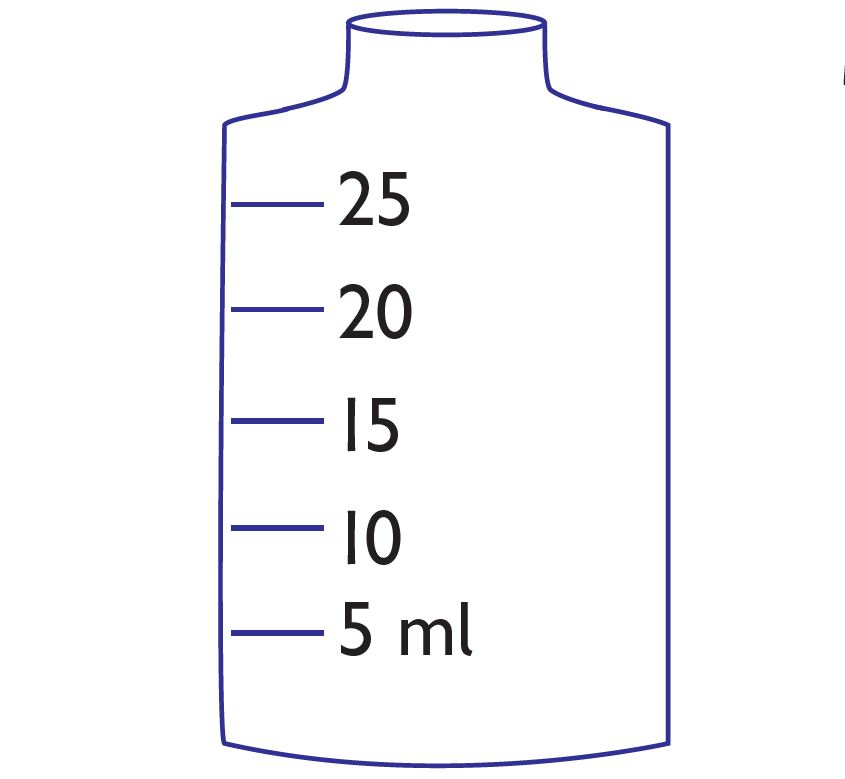Millilitre as a unit of measuring capacity
Group Activity 1
In groups of five:
- Get a transparent straw and close one end.
- Fill a spoon with water.
- Put the water into the straw.
- Mark the height of the water in the straw.
- Divide the height of the water in the straw into five equal parts.
- If the spoon holds 5 millilitres of water, discuss:
- the amount of water in the straw.
- the amount of water in one of the five equal parts of the straw.
- Discuss and share the results with other groups.
Note
The millilitre is a small unit of measuring capacity.
Millilitre in short is written as ‘ml’.
Estimating and measuring capacity in multiples of 5 millilitres
Group Activity 3
In groups of five:
- Get three small containers of different sizes and shapes.
- Label the containers 1, 2 and 3 using a pen or a pencil.
- Estimate and record the capacity of each container. Measure the capacity of each container. Record your results in the table shown.
Container | Estimated capacity | Actual capacity |
1 | ||
2 | ||
3 |
- Repeat the activity with other groups of containers. Compare the estimated and actual capacity of each container.
- Discuss and share your results with other groups.
Container | Estimated capacity ml | Actual capacity ml |
cup | ||
mug | ||
glass | ||
bottle | ||
bottle top |
